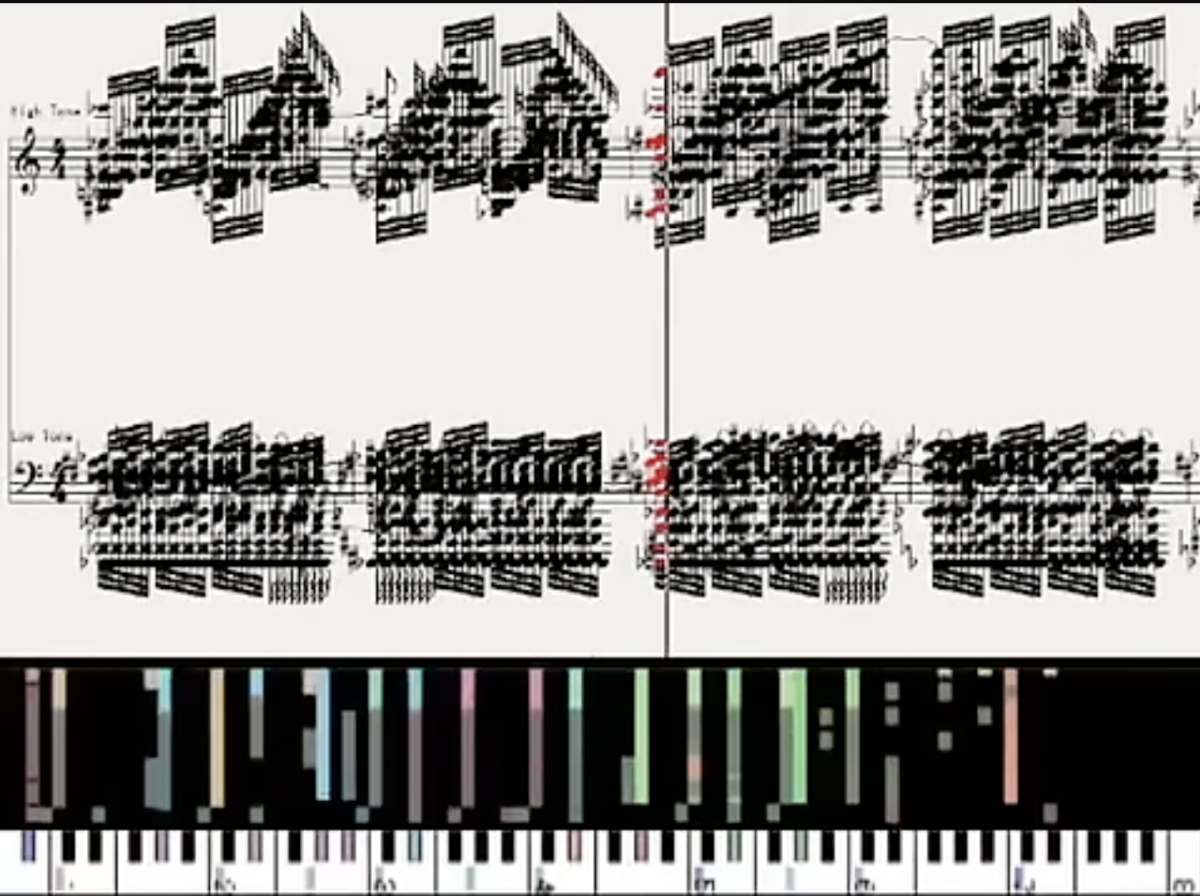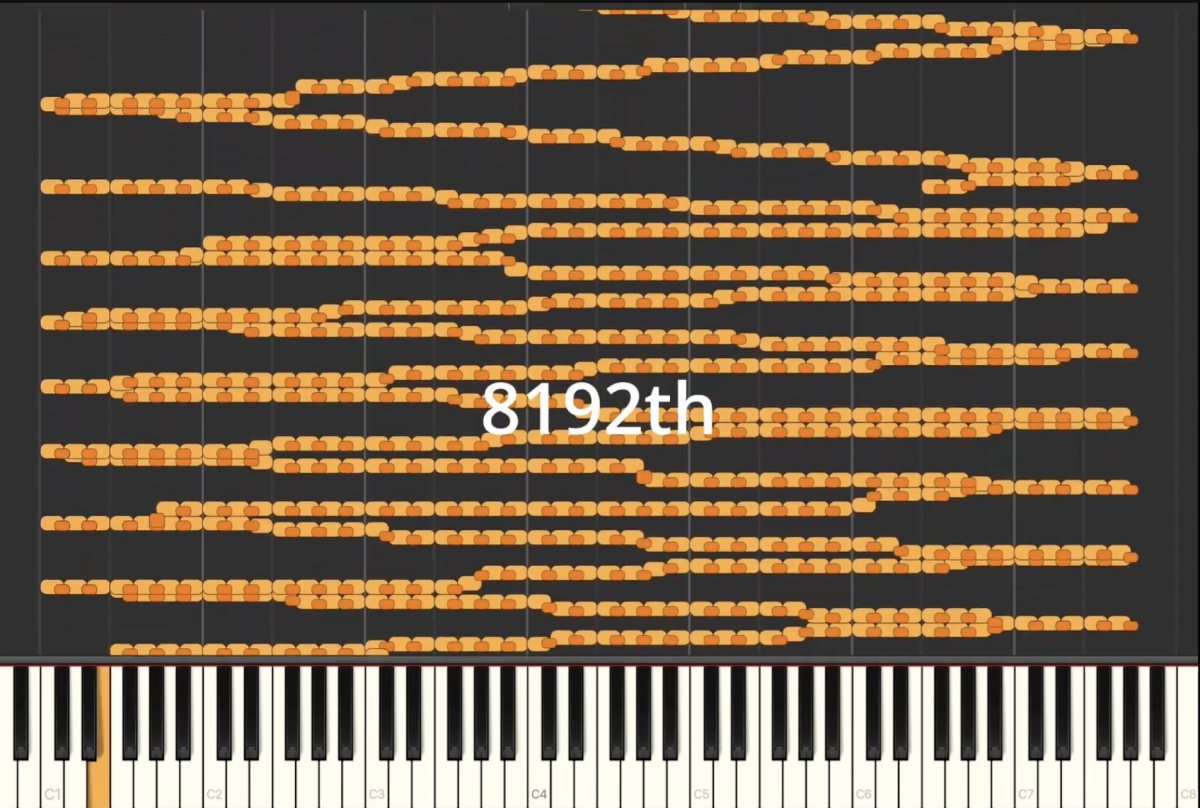
The Phenomenon of Black MIDI: An Introduction
In this blog post, you’ll discover the origins and evolution of Black MIDI,1 a Japanese subgenre that layers millions of notes to create complex auditory and visual compositions. You’ll read about its roots in Touhou Project, the progression of note density in remixes, and how this phenomenon challenges the limits of digital music technology.
Black MIDI is a Japanese subgenre and YouTube phenomenon that emerged in the anime and gaming scene around 2009, where so-called «blackers» remixed and created songs by layering a huge conglomeration of notes. This auditory influx is simultaneously visualized by hypnotizing patterns of interwoven, intersecting note clusters and scales. The density of the content created is both astounding and impossible to reproduce manually. In fact, it pushes the limits of what even technology can achieve.
The term Black MIDI stands for the technique of blackened musical notation, in which the standard notation increasingly resembles a black page by filling the staves with thousands or millions of notes. Thus, composers producing these blackened notations are called «blackers».
MIDI stands for Musical Instrument Digital Interface and is a protocol that allows computer software to communicate with synthesizers and other electronic instruments.
The Standard MIDI File (SMF) is a file format and medium to store music and provides a standardized way for music to be opened and edited in different systems. MIDI is normally produced on a grid in a sequencer within the digital piano roll with dashes and dots that can be transcribed to traditional notation and vice versa.
From Touhou Remixes to Unprecedented Note Counts
Within the gaming/anime scene, Touhou Project is a famous game development project led by the Japanese composer and video game developer Jun’ya Ōta aka ZUN. In this project, they were mostly developing vertical-scrolling 2D shooting games, more precisely bullet hell games or manic shooter games, which are a subgenre of shoot ‘em up video games. Even before Black MIDI, it was a thing to create crazy remixes of songs from Touhou games or Touhou-related songs.
«U.N Owen was her?» is a song composed by ZUN, the creator of the Touhou project for a video game released in 2002 called Touhou Project 6: Embodiment of Scarlet Devil. In this game, the song is used for Flandre Scarlet, the Extra Stage Boss. As a result, the song’s name is often referred to as «Flandre’s theme». The song was remixed by a group called COOL&CREATE in 2004.
This was not yet Black MIDI, but a digital remix, still with various digital instruments. The first Black MIDI video was a remix of this remix and was uploaded by Kuro Yuki on the platform Niconico (originally Nico Nico Douga). From then on, it became a challenge within a small scene to share the MIDI files used for the creation and to create versions with an ever-increasing number of notes played.
The Evolution of Black MIDI
To better understand the origin and development of Black MIDI as a challenge within the gaming scene and Internet culture, I generated a video comparing the first Black MIDI upload to its original inspiration and to further versions with a higher note count of up to 12.7 million notes within the approximately 3:30 min of the song. There are more versions, so this is just a selection to show the development of density.
- 1. It’s important to distinguish that this article (and the entire Hyperplexia Special) focuses on the musical subgenre Black MIDI, not the band named Black MIDI.
Source Links
- Repost of the first Black MIDI video: «Death Waltz【ORIGINAL VIDEO】(Last Brutal Sister Flandre S)» (YouTube)
- Version by marc, total note count: 21,190, software: Synthesia (YouTube)
- Version by thetrustedcomputer, total note count: 280,122, software: Synthesia (YouTube)
- Version by thetrustedcomputer, total note count: 507,514, software: Synthesia (YouTube)
- Version by thetrustedcomputer, total note count: 1,000,851, software: MIDI Trail (YouTube)
- Version by thetrustedcomputer, total note count: 4,190,371, software: PianoFromAbove (YouTube)
- Version by TheSuperMarioBros2, total note count: 12.9 million, software: Synthesia (YouTube)
This blog post is part of the Norient Online Special Hyperplexia, an expansion of the performance project of the same name by composer and pianist Stefan Schultze. The Special was funded by Bern Academy of the Arts HKB.
Biography
Stefan Schultze (*1979, Germany) is a composer and pianist and one of the most multifaceted and original musicians to come out of the German jazz scene. Schultze studied piano and composition in Cologne and New York. He occupies the interface between new music, improvisation, and jazz. His artistic projects cover a spectrum of compositions for small and large ensembles, from leading larger ensemble formations to initiating and producing projects on national and international stages. His compositions explore and translate music from a myriad of contexts, opening new sonic territories and transcending genres. Follow him on his website, Bandcamp, or Instagram.
Published on June 18, 2024
Last updated on June 24, 2024
Topics
Watch how cutting-edge music from Brazil to Singapore is represented in moving images.
How does the artits’ relationship to the gear affect music? How to make the climate change audible?
